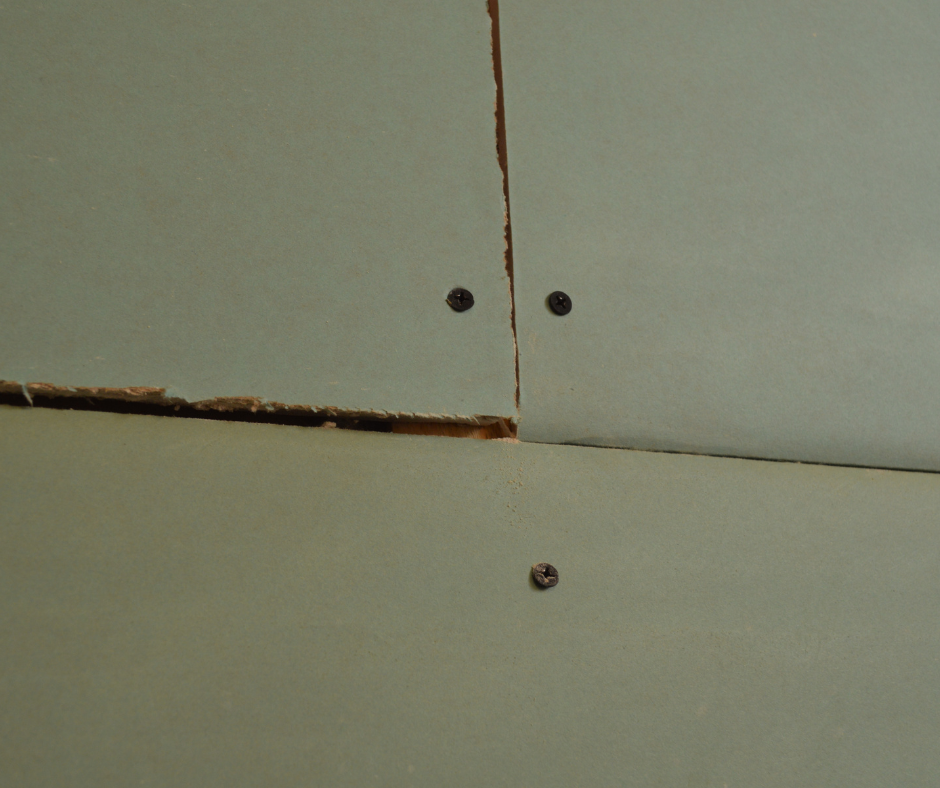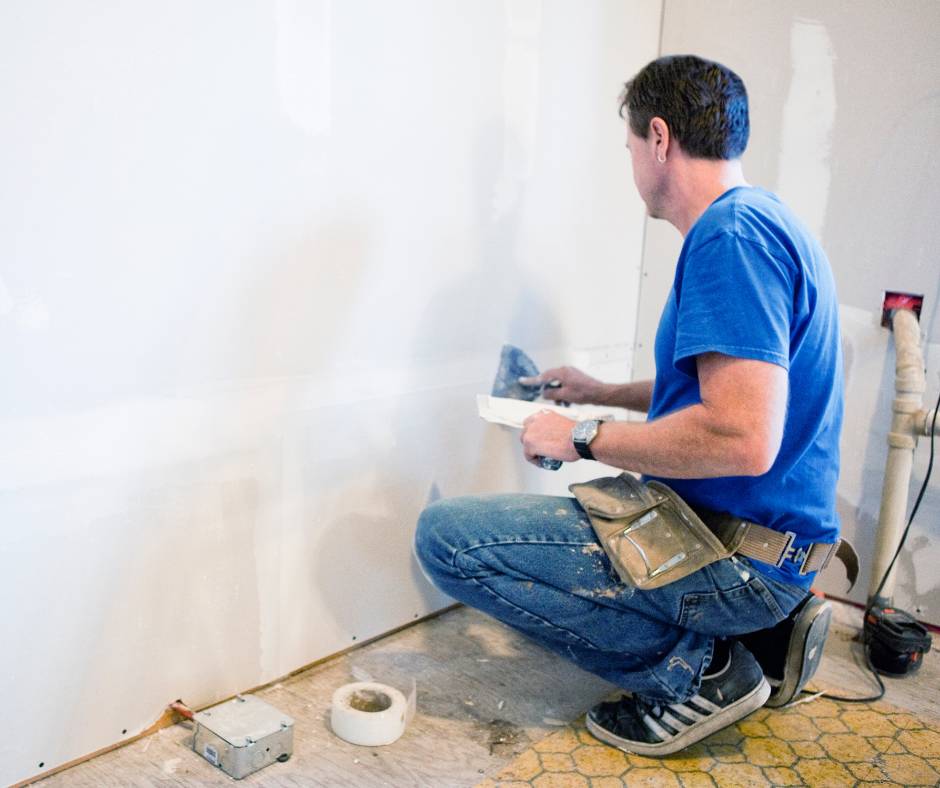Drywall is a popular material used in homes, and it has a quick and easy installation process. But that doesn’t mean it’s without its snags. The quality of your drywall can deteriorate for several reasons, including bad installation.
If you have been unfortunate enough to hire someone to install drywall and they’ve done a poor job, don’t panic. There are many ways to identify a bad drywall job, and they all have relatively simple fixes.
So if you suspect your drywall quality is poor, read on for signs of a bad drywall job.
In This Article We'll Discuss
Benefits of Drywall
Using drywall in your home has several benefits. It is an affordable and attractive option that you can customize to suit your design style. It also offers extra insulation for your home and is fire resistant. Not only is drywall easy to install, but it is low maintenance and simple to repair.
How Can You Tell If A Drywall Job is Bad?

Drywall can have a beautiful and seamless installation when done well. Unfortunately, it can also be installed poorly. This can lead to structural issues and cosmetic problems.
1. Crooked Panels
It is easier to get a straight finish when installing drywall with two people. However, if you are installing it on your own, it is more difficult to hold the panel in the correct position while securing it with screws. That can lead to crooked panels and give your wall a noticeable slant.
How Do You Fix This Bad Drywall Job?
The best way to fix uneven drywall panels is through a process called skim coating. First, you will need to sand the wall. Then you will need to use a polyvinyl acetate primer-sealer to help make the wall more uniform.
Once it has dried, you can apply a drywall compound with a flat drywall knife. You will smooth it over the uneven area and allow it to dry. You will then sand and repeat this process until the wall is more even.
2. Uneven Corners
Uneven corners on your drywall are often due to a crumpled corner bead. This metal piece creates a clean joint between the drywall panels. You will notice uneven corners have creases, gaps, and bubbles. The corner bead can crack and lift, causing visible damage to your drywall panel. It will also affect the structural integrity of your wall.
How Do You Fix This Bad Drywall Job?
To repair uneven corners and a damaged corner bead, you’ll first need to remove the damaged section. This can be tricky, and you may cause more damage around the site while trying to remove it. Don’t panic about this, as it is easy to fix.
Cut a new piece of bead and place it in the area that needs reinforcement. You will then use drywall compound to cover the metal bead and other dents around the area. Once this has dried, sand the area and repeat the process until you have a clean, smooth finish.
3. Visible Joints
Joints between your drywall panels should be smooth and seamless, with a gap no wider than 1/8 of an inch. If your panels have shifted due to poor installation, there is a quick fix.
How Do You Fix This Bad Drywall Job?
You will use drywall compound and tape to disguise the visible joint between drywall panels. Place drywall tape over the joint and cover with drywall compound. Once this has dried, you will sand and repeat the process until you have a smooth and seamless finish. Using a dark color paint or wallpaper is also an effective quick fix to disguise visible joints.
4. Rough Surfaces
You might find rough surfaces on your drywall panels when the area has not been sanded enough or old drywall compound was not cleaned off. Sometimes drywall panels get damaged during installation, and you might find indentations that were not repaired. The finish of your drywall should be smooth and blemish-free.
How Do You Fix This Bad Drywall Job?
Fixing rough surfaces on your drywall is quick and easy. You will use drywall tape and a drywall compound to repair any damaged surface area.
5. Sagging Ceiling
You may notice that your ceilings are beginning to sag where they are connected to your drywall. This is a sign of poor drywall installation and can be unsafe. If your ceilings are sagging, the drywall was not securely attached, or thin sheets were used.
How Do You Fix This Bad Drywall Job?
To fix this problem, you will either need to replace the drywall panel or use furring strips to secure it.
6. Nail and Screw Holes
When the drywall is professionally installed, builders usually insert the screw quite far into the drywall to effectively hide the screw head with drywall compound. If your drywall panels have shifted over time or the installation was not correctly done, you may see nail and screw heads along your drywall panel.
How Do You Fix This Bad Drywall Job?
This is a quick problem to fix with some ready-made spackling and a putty knife. First, sand the area to remove any splinters or uneven edges. Then use the putty knife to fill the hole with spackling.
Allow it to dry and add a second coat. Once this is dry, sand the area smooth, and you should see that the hole is no longer visible. Touch up the area with the same color paint as the rest of your drywall.
7. Dust and Mess
Installing drywall is a messy business and can create a lot of dust. If you have experienced poor drywall installation, you will notice a lot of mess and dust. This is an example of a bad drywall job, as the builder should clean up once the job is completed.
Can You Fix a Bad Drywall Tape Job?

Fixing a bad drywall tape job has a quick cosmetic solution.
Sometimes the drywall tape used to hide the joints can lift due to tape failure or moisture. Simply prep the area with a light sanding using a drywall sanding screen to fix this. Then cut around the site and peel away the damaged tape. Next, apply drywall compound and new tape to the damaged area. Let this dry, and add a second layer of compound. Scrape and feather the area and add as many compound layers as necessary to get a smooth finish. End with a final sanding to get rid of any excess compound.
This is a messy situation so ensure you wear a dust mask and safety glasses to protect your nose, mouth, and lungs.
Final Thoughts
Drywall is a great DIY option in your home, but it can be installed poorly. The good news is that there are quick and easy ways to repair a bad drywall job. Visible joints, rough surfaces, uneven corners, and nail and screw holes can be quickly fixed using drywall compound, sanding, and drywall tape.
Have you experienced a bad drywall job? Have you tried any of these drywall fixes yourself?

